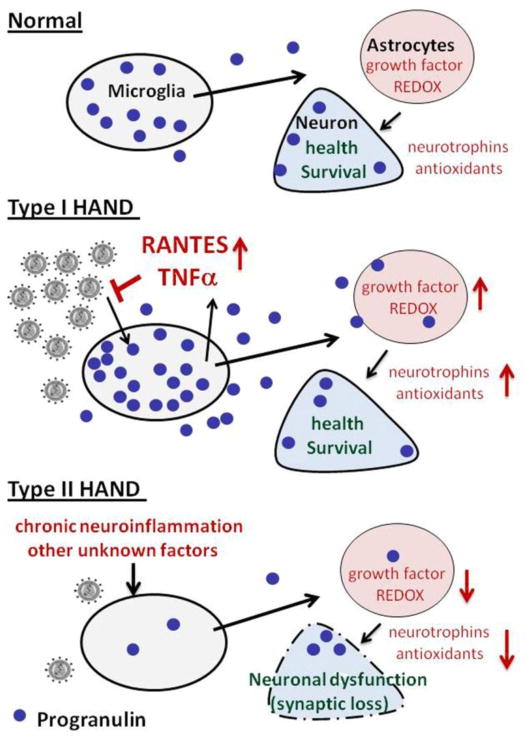Figure 6. Hypothesis.
Based on all available data, we hypothesize that PGRN plays a dual role in the pathogenesis of HIV-associated neurocognitive disorders. (A) In normal brain, constitutive PGRN expression maintains normal neuronal survival in part through promoting neurotrophic and antioxidant gene expression in a paracrine and cell-cell interactions involving microglia, astrocytes and neurons. (B) In the CNS of individuals with active HIV replication (such as in HIVE), macrophage and microglial PGRN expression is upregulated which is reflected in the elevated levels of PGRN. PGRN expressed in the HIV-infected cells mainly functions as an innate antiviral factor, as well as to protect neurons from damaging viral and host products, via mechanisms described above. We speculate that unlike in murine cells, PGRN’s role in human microglia is to promote production of cytokines and chemokines that function as antimicrobial factors during acute infection. (C) In most HIV-associated neurocognitive disorders that are not associated with active viral replication (Type II HAND), PGRN production from macrophages and microglia is reduced by proinflammatory mediators and other unknown stressor contributing to neuronal dysfunction. We propose CSF PGRN as a surrogate disease marker for HAND not associated with active viral replication.

